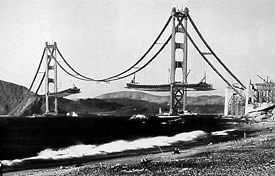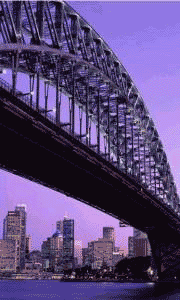Design Process
The first thing in the design process is to design the bridge for the location and weather it will be built in. All bridges no matter what their use is, they have to be designed to withstand Mother Nature and different varieties of weight. There are three terms that come into play when talking about weight of a bridge which are, dead, live, and dynamic loads. Dead load is the weight of the bridge its self. Live load is the weight of the traffic on the deck of the bridge. Dynamic loads are factors like winds and earthquakes.
![]()
With these terms defined we are ready
to explore the forces at work that affect the bridges that we used so
commonly. Most bridges are built on bedrock, which is solid rock. Sure
traffic is a factor in bridge design but what about the natural forces
such as earthquakes and strong wind gusts. Both of these forces can
move solid rigid bridges and suspension bridges. This is when the engineer
has to take in account the climate of the region the bridge is being
built in and what natural disasters happen most frequently. The factor
that the engineer can change the most to best suit the surrounding forces
are the materials used to make the bridge and what type of bridge is
the best for the location. Some building materials expand and contract
with the temperature. Also the sediment that the piers are built in
must be stable enough to withstand the weight of the bridge. After the
engineer has taken all this information he must make a choice on which
would be the best bridge for the location.

Once the bridge type and materials are decided the
next step is to draft a drawing of the bride to scale. Before there
were computers there were draftsmen that hand drew every line of the
blue print. Now technology has advanced and has given the engineers
of today an edge. The program used on the computers now is CAD, which
stands for Computer Aided Drafting. This program speeds up the drafting
process and can let the engineer see the basic design of the bridge
before it is printed out and sent to the builders.
